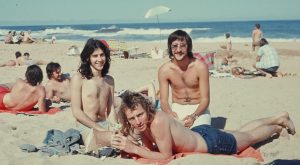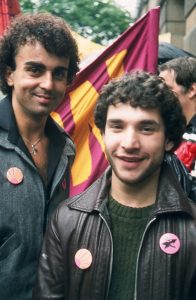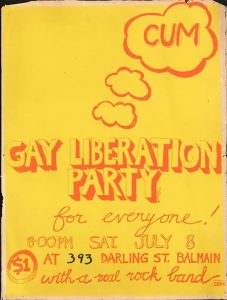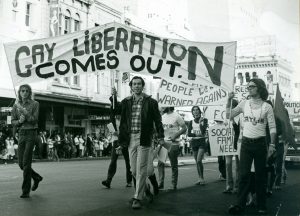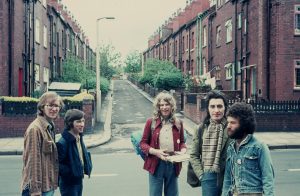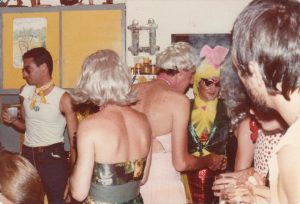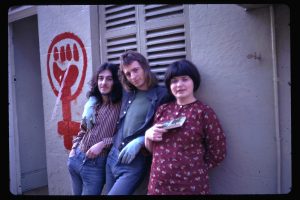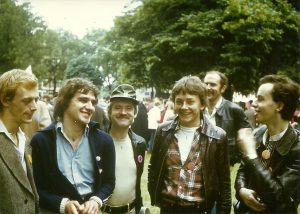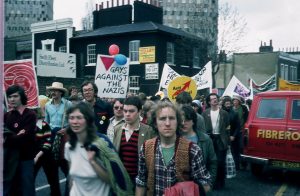
growing up queer
Collected by Eleanor Affleck

"It’s good to acknowledge that the stories I have chosen to collect were subjectively shaped by my own personal experiences, and community networks. I hope I have gone some of the way to bring to light new stories and ways of storytelling but there’s always more to do!
When I first came to collection it was primarily a photography archive and therefore image-based, and LGBTQIA+ identity isn’t always something that’s visible in photos (although it absolutely can be). For that reason I wanted to focus on different ways the LGBTQIA+ community have made and recorded our youth culture history in our own voices: oral histories, youth groups and consciousness-raising, zines and publications, theatre, and technology. This structured some of the questions I asked and the people I approached for interviews."
Eleanor Affleck is a Scottish writer and historian. She has worked with organisations such as the National Trust for Scotland, the V&A, Art UK, and Edinburgh Zine Library to improve LGBTQIA+ access in arts and heritage. She recently completer her MA in Queer History at Goldsmiths, University of London, and her research interests include approaches to queer public history, performing desire on stage, and sexuality in Scottish modern art.
Eleanors's research project was part of Setting the Record Straight, supported by the National Lottery Heritage Fund.
collection of stories




zine culture
It’s hard to define what a zine is, but they’re usually DIY, not-for-profit, self-published documents that are easy to make and reproduce. They can be about anything you like. Zines are rooted in self-publishing movements and have been used by a diverse range of communities throughout history, from youth clubs such as the 59 Club, to punk and Riot Grrrl movements, to groups documenting civil rights activism.
Here we’ve been collecting some zines about experiences of growing up LGBTQ+ in the UK. Some are fanzines, about the author’s relationship to certain figures from pop culture, and others are perzines, zines that tell a personal story, and some are a mix of both. With zines, you can write about yourself and your story in exactly the words you want in a way that often isn’t available in mainstream media. This can be very powerful for communities such as the LGBTQ+ community, who have often been misrepresented or under-represented in the media. Zines and publications also enable access to information, advice, and community networks. In a time before the internet and under the censorship of Section 28, zines might have been the only way that a young person could access information about their sexuality.

gregg blachford
‘Here is my diary entry for my first day of my new life in London: August 29, 1973.
“Land from Singapore at 9.15 am. Take train from Gatwick to Victoria Station. Raining. Bus 52 to Kensington Student Hostel on Kensington Church Street. Tube to Piccadilly Circus and meet a Rees in the loos. Visit C.H.E. (Campaign for Homosexual Equality) office nearby. Meet up with my cousin Jan visiting from Toronto and her friend Louise. With them, see Applause with Lauren Bacall at Her Majesty’s. Irish pub after. Love London!”
That one day encapsulated my life to be in London for the next many years: politics, entertainment, pubs, sex and meeting up with old and new friends. No wonder I loved it.’
Born in Canada, Gregg moved to London in his early 20s to take a one-year PGCE at the University of London and working at The Greystoke Pub whilst studying.
Looking for accommodation, he placed an ad in the Gay News;
‘I put this ad into the recently created Gay News newspaper hoping to find a share with other gay liberationists.
Identifying myself as “non-discreet”, I was having a dig at those who wanted to share with someone “discreet”. I didn’t want to be like them.’
He was heavily involved in gay activism, especially in Gay Left and the Gay Teachers Group, and later joining the London Lesbian & Gay Switchboard as a volunteer and eventually becoming the first paid Youth Worker for the London Gay Teenage Group.
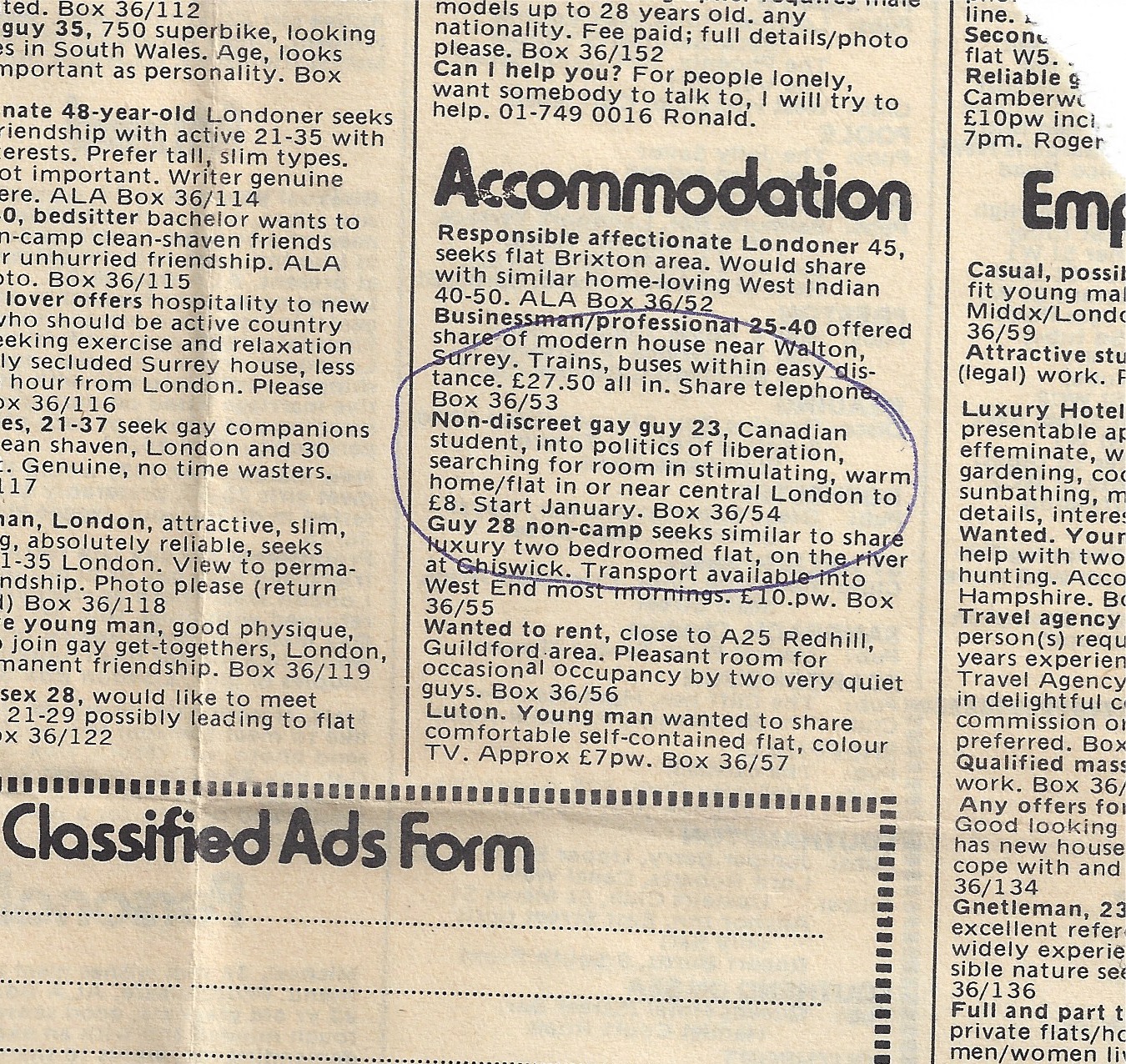
Picking up a camera at the age of 11, Gregg documented his moves across the world and his days living in London throughout the 70s and 80s, from trips to the seaside with friends to Gay Liberation demonstrations.
queering the art classroom
Youth groups and youth projects are another way to explore LGBTQ+ stories and ways of seeing. Queering the Art Classroom are an organisation that work with GCSE students in London schools to explore gender and sexuality in the art curriculum. They work closely with student artists, investigating lots of different topics with openness and a focus on the creative process as opposed to outcomes.

bedlam chorus
Theatre is another way the LGBTQ+ community have told our stories. Bedlam Chorus are an LGBTQ-led theatre company whose play butterfly was performed at VAULT Festival in 2020. Written by Sam Arbor and Clodagh Chapman, the play is a kaleidoscope of different ways of sharing queer history through speech, song, dance, and drag.
“An Elizabethan woman stitches a beard from her pubic hair to marry the woman she loves. A Punjabi-speaking Muslim girl tries to make her parents understand who she is by translating the untranslatable. A drag queen fighting in World War II must literally lip sync for her life.”





